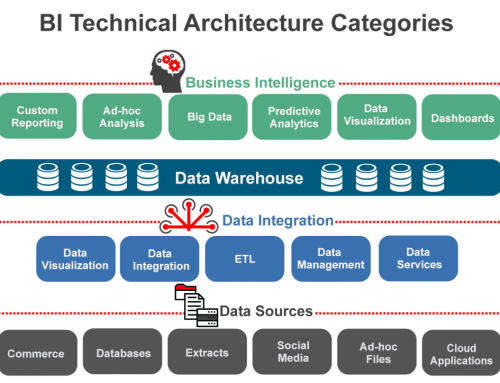Omni-channel marketing is a marketing strategy focusing on customer interactions, experiences and messaging. It is often interchanged with other phrases like multichannel marketing, cross-channel marketing and integrated marketing. In the B2B world, it is necessary to maintain relevance and a presence everywhere your customers or potential customers look for your products or services.
For some marketers, phrases like omni-channel, multichannel and cross-channel marketing denote the same thing, but omni-channel is an advancement of multichannel marketing. It is a more detailed strategy where you focus on being omnipresent in your customers’ experience, whereas multichannel is a more marketer-based, isolated strategy and may comprise of just two marketing channels.
A recent DMA Response Rate Report indicated that 65% of marketers utilized two or more media channels in their marketing campaigns while 44% of the marketers were found to have used three or more channels.
Omni-channel is also integrated in its design. Campaigns are well-planned for each relevant channel, not included as a second thought. Additionally, there is typically software, analytics and automation involved in perfecting the customer experience.
What is a seamless omni-channel marketing experience?
It is coherent and unified on all marketing channels. For instance, a customer may receive a post card in the mail, followed by an email, then see a banner ad on social media or a retargeted ad on a favorite website, all highlighting the same marketing message.
What makes omni-channel marketing critical for B2B firms?
B2B marketing is principally concerned with ROI and producing the greatest top of funnel opportunities. This type of marketing does not always have the same impressive budgets as B2C (because B2B audiences are significantly smaller than consumer) but needs to be as productive.
Using an omni-channel concept makes it necessary for strategy and ROI to be considered from inception, especially since it requires coordinated strategy and execution to generate results. Results from different channels should be analyzed separately while acknowledging the affect that each has towards the overall effectiveness. In omni-channel marketing, the whole is always greater than the sum of its parts.
This is also particularly relevant for B2B marketers that are implementing new channels, technologies and tools. For example, GE is doing a wonderful job on various intra-channels such as Twitter, Pinterest, Facebook and other social platforms. This is a great example of multi-platform marketing within a single channel and a reminder that all tactics and platforms within a single channel are not the same. Therefore, your investment and distribution should be diversified to truly produce an accurate depiction of results within each channel.
Problems facing businesses when using omni-channel marketing
The Thought Leadership Paper, a report prepared by Forrester Consulting (commissioned by Accenture and Hybris) indicated that although the conventional B2B purchasing journeys were linear and more prevalently offline, the change by marketers to orchestrate more omni-channel campaigns is progressing more toward online interactions.
Over 50% of the 930 B2B customers covered in the report said they anticipate making half of their purchases online within the next three years. Future technology and the ways in which it enhances organization structure and productivity were considered crucial.
What are some impediments to omni-channel marketing?
Impediments to omni-channel include:
- Integration of the back office
- Problems when sharing data across teams or countries
- Poor skills
- Worker engagement and/or resistance
What are the analytics that a firm needs to concentrate on when assessing the outcome of omni-channel marketing campaigns?
Your marketing campaigns should establish clear and measurable goals while keeping your sights on short, mid and long term goals. Astute marketers understand results are never strictly about sales. The best marketers analyze multiple components of every campaign to track the successes and failures at different stages of the program. Only through this scrutiny will you truly understand what needs improvement, support and more investment. Suppose your goal is to gain registrants, but your campaign didn’t produce many. This must have been a failure, right? Well, what if your marketing efforts produced a ton of opens, clicks, site visitors, but very few registrants. Maybe that was a result of an incredibly intense registration form. Was that the fault of the campaigns or just poor form execution? As marketers we need to assign value to many stages of the engagement process such as opens, clicks, impressions, site traffic, chats, calls, requests, downloads, leads, opportunities, and sales just to name a few.
Attribution is important when it comes to an omni-channel marketing campaign. In a survey conducted by AdRoll interviewing 1000 marketers, it was found that attribution: assists marketers to identify where they should apply marketing spending (56%), justifies the budget for marketing (44%), and optimizes the performance of the marketing campaign (43%). Overall, 71% of marketers monitor attribution in order to understand their customers better.
Therefore what should a business take into account when formulating an omni-channel marketing strategy?
The appropriate marketing rules are still applicable. You need to go where your customers are. It is much more difficult to engage with them in unfamiliar territory. Discuss the issues that affect your customers using their language. Position your services or products based on the benefits, not just the features. Provide some type of emotional connection.
What is the value of data in omni-channel marketing?
A robust database is key to successful omni-channel marketing. It is important to capture all necessary contact data on your customers or potential customers so you can effectively market to them through multiple channels. Therefore you should ensure all activities are designed to better fill up a single perspective of every customer. With time, your data set should incorporate the following: name, company name, email, phone, social media handles, postal address, preferences and behaviors.
In conclusion, what are the main advantages of omni-channel marketing?
For B2B, Omni-channel marketing allows you to get a better general understanding of your customers and the tactics that solicit engagement. It will enable you to enhance your targeting which results in a proportional change in conversion. Customers will perceive your business to be in touch with the market. And, you will instinctively understand attribution better and eventually improve your ROI and overall business success.






